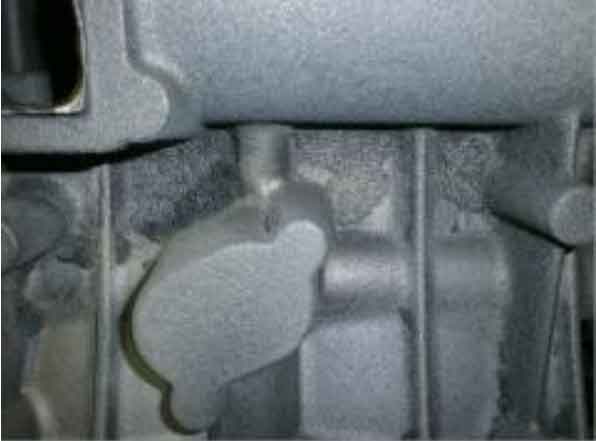In the automotive industry, the reliability of engine components is paramount to ensuring optimal performance and safety. Among these components, the engine camshaft plays a critical role in coordinating valve timing, directly influencing combustion efficiency and power output. This article presents a comprehensive analysis of an engine camshaft fracture failure encountered during cold-testing at our facility, alongside actionable strategies to mitigate recurrence.

Failure Background
During routine cold-testing of engines at our assembly line, abnormal noise was detected in a unit. Subsequent disassembly revealed a fractured exhaust engine camshaft. The component, manufactured from G300 chilled cast iron, exhibited no visible external damage, prompting a systematic investigation to identify the root cause.
Macroscopic Fracture Analysis
Initial visual inspection of the fractured engine camshaft identified two critical anomalies:
- Excessive Grinding Marks: A circumferential grinding region spanning approximately 21.21 mm (50% of the shaft’s circumference) was observed, with a depth of 1.15 mm—exceeding the permissible limit of 0.5 mm.
- Surface Irregularities: No evidence of mechanical impact or deformation was detected, suggesting that stress concentration due to grinding defects initiated the fracture.
Microscopic Fracture Analysis
Scanning electron microscopy (SEM) using a Hitachi S-3400N system revealed three distinct fracture mechanisms:
- Slag Inclusion Defects:
- Region A exhibited slag inclusions, indicative of casting imperfections. These defects reduced the material’s fatigue resistance by acting as stress concentrators.
- The relationship between slag inclusion size (d) and stress concentration factor (Kt) is approximated by:Kt=1+2ρdwhere ρ is the radius of curvature at the defect boundary.
- Surface Scoring:
- Region B displayed deep, linear surface scores spanning 50% of the fracture cross-section. These scores propagated into the fracture plane, accelerating crack initiation.
- Cleavage Fracture Morphology:
- At 800× magnification, brittle fracture characteristics (e.g., river patterns and faceted grains) dominated the microstructure. This confirmed rapid, unstable crack propagation under tensile stress.
Material Property Evaluation
Hardness Testing
Brinell hardness measurements (AFFRILD 300 system) validated the material’s compliance with specifications:
| Measurement Location | Hardness (HBW) | Specification (HBW) | Compliance |
|---|---|---|---|
| Point 1 | 235.5 | 207–262 | Pass |
| Point 2 | 237.7 | 207–262 | Pass |
| Point 3 | 242.2 | 207–262 | Pass |
| Average | 238.5 | — | — |
Metallographic Analysis
Leica DMI3000M microscopy revealed:
- Graphite Structure: Type A + B graphite with a length grade of 5 (per ASTM A247).
- Matrix Composition: Pearlite (85–90%) with trace ferrite, consistent with G300 chilled cast iron standards.
Fracture Mechanism Synthesis
The engine camshaft failure resulted from a synergistic interaction of three factors:
- Stress Concentration: Excessive grinding depth (h=1.15 mm) amplified localized stress, exceeding the material’s endurance limit. The stress concentration factor (Kt) for a circumferential groove is given by:Kt=1+2(rh)0.5where r is the groove root radius.
- Slag Inclusions: Subsurface defects reduced the effective cross-sectional area, lowering fracture toughness.
- Brittle Fracture Propagation: The absence of plastic deformation (evidenced by cleavage patterns) confirmed insufficient energy absorption during crack growth.
Preventive Strategies
To mitigate future engine camshaft failures, the following measures are recommended:
- Grinding Process Control:
- Limit grinding depth to h≤0.5 mm and implement automated inspection systems to detect deviations.
- Enhanced Casting Quality:
- Adopt vacuum degassing or filtration techniques to minimize slag inclusion formation.
- Non-Destructive Testing (NDT):
- Implement ultrasonic testing (UT) or magnetic particle inspection (MPI) to identify subsurface defects.
- Material Optimization:
- Evaluate ductile iron (e.g., ASTM A536) as an alternative, leveraging its superior fracture toughness (KIC≈50–80 MPam) compared to chilled cast iron (KIC≈20–40 MPam).
Conclusion
Engine camshaft fractures, while rare, pose significant risks to engine functionality and safety. This study underscores the criticality of manufacturing process control, material integrity, and defect detection in preventing such failures. By addressing stress concentrators, improving casting quality, and adopting advanced NDT methodologies, the durability and reliability of engine camshafts can be substantially enhanced.
